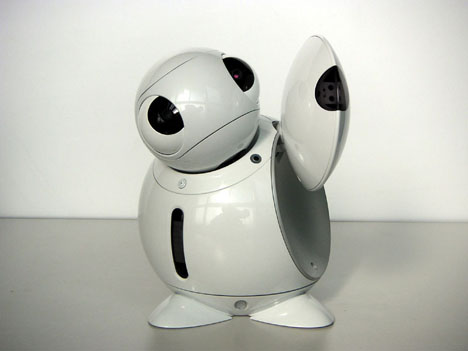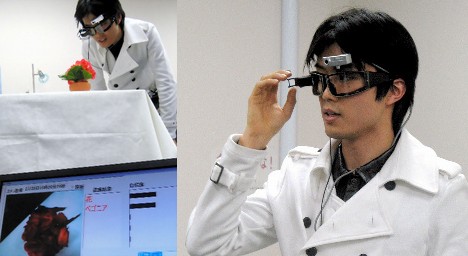
Japan's first field test of "smart posters" using Near Field Communication (NFC) -- a short-range high-frequency wireless communication technology that lets users view digital content simply by holding their compatible cellphones near the posters -- is being conducted at a Chiba-area shopping mall, it was announced on September 2.
Major phone operator SoftBank Mobile, along with NTT Data, Hitachi and Dutch smart chip maker Gemalto, are testing the technology with WALL-E and Tinker Bell movie posters embedded with NFC tags.
Throughout October, selected test participants will be able to receive and view digital content such as movie stills and trailers simply by holding their NFC-compatible phones (containing NFC-USIM cards) next to the smart posters. Along with the digital content, users also receive an access code that, when transferred to a compatible Hitachi HDTV at home, allows them to view a WALL-E trailer in high definition (via Hitachi's content distribution service).
The tests, which are designed to help the companies evaluate the effectiveness and potential of NFC smart posters as a promotional medium, could be a sign of things to come in the field of poster advertising. Should NFC smart posters become cheap and easy to produce, they have the potential to replace the ubiquitous QR (2D) code that commonly appears in Japanese advertising posters. NFC is seen as more convenient than QR code because the user does not have to scan a code and visit a separate website to view the data. Instead, digital content can be accessed directly with a simple swipe of the phone.
[Source: Nikkei Net, NTT Data]


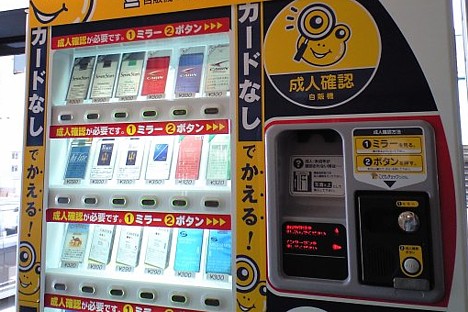
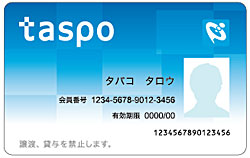 As part of the age-verification system, most of Japan's 570,000 cigarette vending machines are being outfitted with RFID readers that check the purchaser's Taspo age-verification card. Smokers without a Taspo card can now either buy their cigarettes in person over the counter or use one of 4,000 special machines equipped with face-recognition systems (these machines do not require Taspo cards). More face-recognition machines are on the way, according to vending machine manufacturer Fujitaka, who developed the face-recognition hardware.
As part of the age-verification system, most of Japan's 570,000 cigarette vending machines are being outfitted with RFID readers that check the purchaser's Taspo age-verification card. Smokers without a Taspo card can now either buy their cigarettes in person over the counter or use one of 4,000 special machines equipped with face-recognition systems (these machines do not require Taspo cards). More face-recognition machines are on the way, according to vending machine manufacturer Fujitaka, who developed the face-recognition hardware. 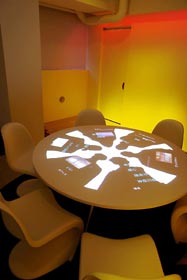 IT company
IT company 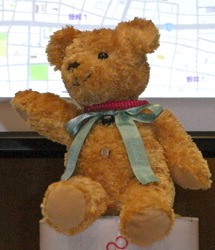 On June 3, engineers at
On June 3, engineers at 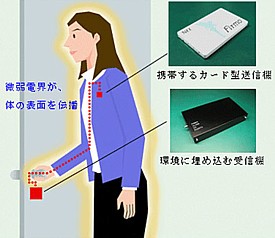 NTT has begun selling a device that transmits data across the surface of the human body and lets users communicate with electronic devices simply by touching them, the company announced on April 23.
NTT has begun selling a device that transmits data across the surface of the human body and lets users communicate with electronic devices simply by touching them, the company announced on April 23. 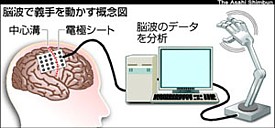 Researchers at Osaka University are stepping up efforts to develop robotic body parts controlled by thought, by placing electrode sheets directly on the surface of the brain. Led by Osaka University Medical School neurosurgery professor Toshiki Yoshimine, the research marks Japan's first foray into invasive (i.e. requiring open-skull surgery) brain-machine interface research on human test subjects. The aim of the research is to develop real-time mind-controlled robotic limbs for the disabled, according to an announcement made at an April 16 symposium in Aichi prefecture.
Researchers at Osaka University are stepping up efforts to develop robotic body parts controlled by thought, by placing electrode sheets directly on the surface of the brain. Led by Osaka University Medical School neurosurgery professor Toshiki Yoshimine, the research marks Japan's first foray into invasive (i.e. requiring open-skull surgery) brain-machine interface research on human test subjects. The aim of the research is to develop real-time mind-controlled robotic limbs for the disabled, according to an announcement made at an April 16 symposium in Aichi prefecture. 